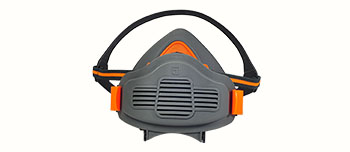Quartz sand is a common industrial raw material widely used in industries such as glass, ceramics, and casting. However, long-term exposure to quartz sand dust can cause serious harm to the respiratory system of workers and may lead to occupational diseases such as silicosis. Therefore, workers working in quartz sand workshops must attach great importance to respiratory protection and take scientific and effective measures to protect their own health.
The hazards of quartz sand dust
The main component of quartz sand is silicon dioxide (SiO ₂). When its dust is inhaled by the human body, it will deposit in the lungs, causing fibrosis of lung tissue and leading to silicosis. Silicosis is an irreversible occupational disease that can seriously affect respiratory function and even endanger life. In addition, long-term exposure to quartz sand dust may also cause respiratory diseases such as chronic bronchitis and asthma.
Respiratory protection measures
1. Wear a suitable dust mask
Choose dust masks that meet national standards to ensure their filtration efficiency can effectively block quartz sand dust.
Select masks with corresponding protection levels based on dust concentration, such as KN95 or higher level KN100 protective masks.
Ensure that the mask is tightly attached to the face to avoid air leakage.
2. Proper use and maintenance of protective equipment
Wear and replace masks correctly according to the instructions, and avoid reusing disposable masks.

Regularly check the sealing and filtering effectiveness of the mask, and replace it promptly if any damage or failure is found.
Reusable dust masks should be regularly cleaned and disinfected.
3. Strengthen workshop ventilation and dust removal
The workshop should install an effective ventilation system to maintain air circulation and reduce dust concentration.
Adopt wet operation or local exhaust dust removal equipment to reduce dust diffusion.
Regularly clean the workshop floor and equipment of accumulated dust to avoid secondary dust.
4. Maintain good personal hygiene
Wash hands and face promptly after work to avoid dust residue.
Change work clothes to avoid bringing dust home.
Do not eat or drink in the workplace to reduce the risk of dust entering the body through the mouth.
5. Regular health check ups
Workers should undergo regular occupational health examinations, especially lung examinations, to detect potential problems early.
If symptoms such as cough, chest tightness, and difficulty breathing occur, seek medical attention promptly and report to the employer.
Corporate Responsibility and Management
In addition to workers' own protective measures, enterprises should also take responsibility for occupational health management:
Provide protective equipment that meets the standards and ensure that workers use it correctly.
Strengthen occupational health training and enhance workers' awareness of protection.
Regularly monitor the dust concentration in the workshop to ensure compliance with national occupational health standards.
Establish health records and track the health status of workers.
conclusion
The respiratory protection of workers in the quartz sand workshop is crucial. It requires individuals to raise their awareness of protection and use protective equipment correctly, as well as enterprises to strengthen management and improve the working environment. Only through joint efforts from multiple parties can the risk of occupational diseases be effectively reduced and the health and safety of workers be guaranteed.
 English
English





